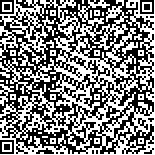| This article has been:Browse 5151Times Download 7912Times |

scan it! |
|
|
| DOI:10.13522/j.cnki.ggps.2017.11.020 |
|
| Application and Validation of Nonlinear Auto-regressive Neural Network Model: Taking Water Supply to Residential Area as an Example |
|
LI Xi’nan, WANG Ning, MEI Yadong, ZHAO Xianjin
|
|
Guizhou Water Conservancy and Hydroelectric Power Investigation, Design and Research Institute, Guiyang 550002, China; Reserch Center on Water Resources Exploitation in the Karst of Guizhou, Guiyang 550002, China; State Key Laboratory of Water Resources and Hydropower Engineering Science, Wuhan 430072, China
|
| Abstract: |
| Nonlinear auto regressive (NAR) neural network with feedback and memory has many advantages in analysis of time series. Taking water supply to urban residential areas as an example, we proposed a NAR neural network model in this paper to analyze the domestic demand of Guizhou Province for water. The performance of the model was validated and the temporal variation in water requirement was then calculated. The predicted results are summarized as follows. ①The NAR neural network model was efficient and accurate, and the correlation coefficient and Nash coefficient of efficiency predicted by the model were 0.97 and 0.87 respectively. The results from the LBQ test showed that there was no autocorrelation among the predicted results. The AUC in the ROC curves of the predicted results was 0.938 (i.e., in the first level, and a higher accuracy). ② In the calculated rational water requirement, the predicted average water requirement per person in 2020 and 2030 was 137.72 liter per day and 132.94 liter per day respectively, meeting the requirements set in the design code of GB50013-2006. In summary, the NAR network is suitable for predicting the time series of water requirement and provides a reference for analyzing future demand for water. |
| Key words: NAR Neural Network; leave one out cross validation; Ljung-Box Q test; ROC curve; quota forecast |
|
|